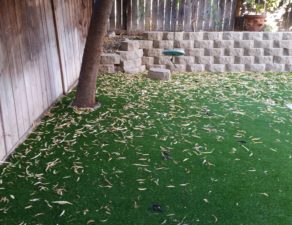In many people’s minds, trees are essential to a visually pleasing landscape. But for many gardens, it’s the unusual trees that really make the space seem special. Weeping trees lend a sense of enchantment to your landscaping, but be careful with them. In general it is best to limit yourself to one variety per garden, so that you don’t go overboard. These trees should be used as a centerpiece or focal point, so that they can be appropriately appreciated for their unusual beauty!
What is a weeping tree?
A weeping tree is one that has branches and/or leaves that droop downward. Their shape creates a graceful silhouette. Contrary to common belief, most of these trees do not normally shape themselves this way. Instead, they are a result of mutations. Weeping specimens are grafted onto rootstock of the standard species, and sold that way. You have to pay special attention to the type of young tree you’re buying, and you can’t just plant seeds for particular trees and expect them to “weep” on their own.
What varieties can I plant?
Common examples of weeping trees include: Weeping Mulberry, Weeping Willow, Weeping Rose Trees, Shoestring Acacia, Lavender Twist Redbud, and Weeping Apricot Trees.
Another way to recognize that a tree is weeping is by the name. Look for words like “pendulum” or “pendula” in the name.
How do I maintain a weeping tree?
Because their branches can reach the ground, keep in mind that you will need a larger horizontal area for your weeping tree. Also, remember that placing your weeping tree too close to other trees can lead to pruning and maintenance problems. Therefore, it’s important to choose the right spot in your yard before planting a weeping tree. Landscape around it to draw the eye to its natural beauty.
With grafted trees, you need to watch for suckers coming off of the species rootstock. These can deplete the tree of energy and alter the shape of the tree, because they aren’t actually from the weeping variety. Simply keep your tree healthy and tear off any suckers as they appear.
After planting your tree, remember to stake it until the trunk has grown rigid. This will ensure upright growth and help your tree to achieve the height and form you want.
As for pruning, watch for a massive tangle of branches that can form around the crown of a weeping tree. When not properly thinned, your tree can become top-heavy and suffer damage. Trim the crown when your tree is dormant, and you can clearly see its structure. Trim any branches that drag the ground, and check to be sure that the crown of the tree is balanced.








Write a comment: